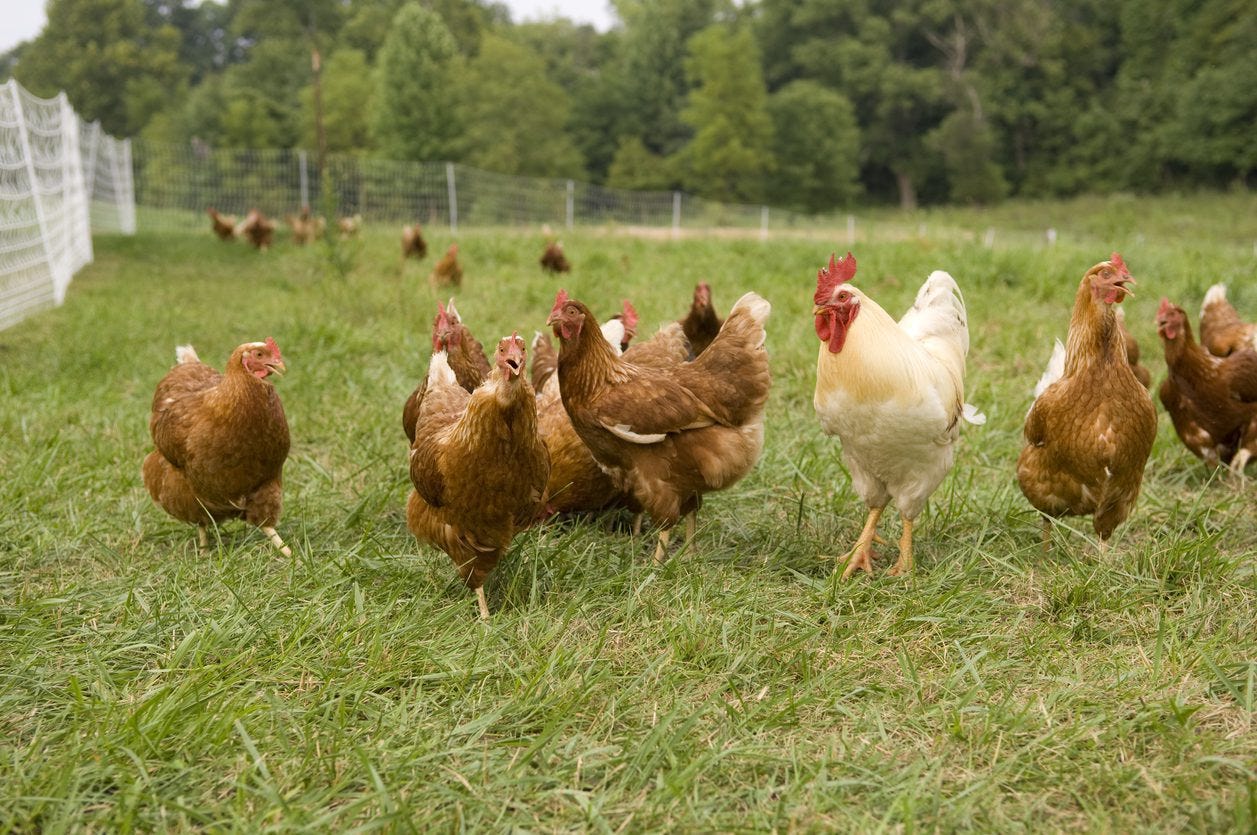What to Look for When Purchasing the Best Quality Eggs
Available in the dairy section of grocery stores, the oval, chicken-produced foods, are enjoyed throughout the year, particularly as a breakfast staple. Though their health benefits are often misunderstood, eggs have remained a popular food in the West, and many other places around the world.
Complete Protein
One of the few foods considered to be a complete protein, eggs have an impressive total amino acid profile. Eggs contain all nine essential amino acids that the body can’t produce on its own. Additionally, eggs are full of vitamins needed for the body to produce energy, such as thiamin, riboflavin, folate, and B12.
The egg white contains precious sulfur amino acids, essential for our own antioxidant defense systems and largely absent from plant proteins. The egg yolk is loaded with phospholipids, nutrients that are the main building blocks for all our cells. The yolk also provides lutein, zeaxanthin and other carotenoids that are essential for the eyes and vision, and are also accumulated within the brain – clinical trials indicate they are involved in information processing.
Shelled Superfood
During the height of the panic about dietary cholesterol, people were advised not to eat eggs because the egg yolk contains a small amount of cholesterol. Research has clarified that cholesterol in the diet does not necessarily become cholesterol in the arteries and that the body needs cholesterol for good health.
In a huge study (recently published in the American Journal of Clinical Nutrition) of more than 177,000 people in 50 countries on 6 continents, no associations were found between egg consumption and blood cholesterol levels, major cardiovascular events, or premature death. Eggs are finally being recognized as the superfoods they are, due in large part to their remarkable nutritional profiles.
Not All Eggs Are Created Equal
There are six different egg sizes in the US. Frequent egg purchasers will know that there are small, medium, large, extra-large, and jumbo eggs. But do you know what they call the smallest eggs? Weighing in at 1.25 ounces (minimum mass per egg) is the peewee egg.
There are many different natural egg colors as well. In addition to the standard white eggs, you’ve probably seen brown eggs in your local grocery store. While certainly less common commercially, some chicken breeds lay pinkish/cream, blue, or even green eggs. Of course, these are shell colors and not the color of the eggs themselves, like in Dr. Seuss’ famous children’s book “Green Eggs and Ham.”
With so many differences to consider, do you know how to buy the best eggs? Is one type of egg better than another? Here’s what you need to know when purchasing the highest quality eggs…
How to Buy the Best Eggs
For many consumers, an important consideration is the living conditions of the chickens laying the eggs they’re purchasing. Egg-laying chickens are raised in one of four different environments: cage, cage-free, free-range or pasture-raised. Let’s take a closer look at each type:
4 Different Types of Eggs: Which is Best?

1. Cage Eggs
As the name suggests, these eggs come from chickens raised in cages. Typical cages have a sloped wooden floor and contain four to eight birds. These cages restrict the animal’s normal motions such as flapping their wings.
Some “enriched” cages have perches or nesting boxes. These cages hold up to 60 chickens, but the birds normally don’t have outside access.
2. Cage-free Eggs
This environment allows birds to move both horizontally and vertically. Though cage-free structures vary, most afford chickens a little room to roam – to nest, roost, perch, forage and spread their wings. However, the animals still might not have access to an outside space.
3. Free-range Eggs
The main difference between cage-free and free-range eggs is that free-range birds are granted access to some outside space. How much space? What kind of space? How long are they allowed to remain outside?
Those factors all vary from one farm or facility to another. Unfortunately, at this point, uniform standards don’t exist to ensure the kind of healthy environment implied by the name of these systems. Programs like Food Alliance Certified and American Humane Certified have different criteria for the size of outdoor enclosures and the number of hours each day the birds must be kept outside.

4. Pasture-raised Eggs
Pasture-raised eggs come from birds that have the freedom to move around in a large yard covered with grass or other vegetation. Again, the size of the open area and number of hours the birds are permitted to roam free vary, but these criteria tend to be stricter in pasture-raised systems. Also, pasture-raised chickens are fed a healthy diet.
Other Considerations
In addition to the size and color of the eggs, many consumers are concerned with price, quality, and treatment of the animals.
- Price – in general, the more space it takes to house the birds, the more expensive the eggs are.
- Quality – according to the Egg Nutrition Center, the nutritional values of eggs are comparable across all systems.
- Treatment – cage and cage-free animals tend to be treated in a less humane manner, while free-range and pasture-raised birds usually are raised in better conditions.
Hopefully, this information will help you decide which eggs to purchase on your next trip to the grocery store.
At BrainMD, we’re dedicated to providing the highest purity nutrients to improve your physical health and overall well-being. For more information about our full list of brain healthy supplements, please visit us at BrainMD.
- This Is What You Need to Know About HBOT
Medically Reviewed by Dr. Nicole Avena - April 22, 2024 - Hormone Changes in Men: How to Know If You Have Low Testosterone! - April 15, 2024
- This Is What You Need to Know About EMDR Therapy! - April 11, 2024




Informative blog, The methods you mentioned here to consider while purchasing the eggs are really helpful. These tips will really help to find the healthiest eggs. Thanks for the blog and keep up the good work.